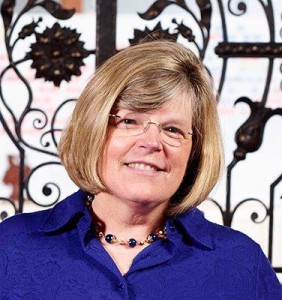 A friend recently received a document from a cousin, outlining her family’s ancestry. It was quite long, she said, and mentioned a Mayflower ancestor — but she didn’t know how to interpret it. There were lots of numbers, some of them roman numerals.
A friend recently received a document from a cousin, outlining her family’s ancestry. It was quite long, she said, and mentioned a Mayflower ancestor — but she didn’t know how to interpret it. There were lots of numbers, some of them roman numerals.
My well-trained husband, hearing this, asked, “Is it an ahnentafel?” It sounded like it might be. I asked one more question: does it start in the past, or does it start at or near the present? “It starts with me, as number 1,” my friend said. “Ah, yes,” I said, “it is an ahnentafel.”
The ahnentafel, or ancestor table, lists your direct line of ancestors, beginning at or near the present and going back to the earliest known ancestors. I like to think of it as a multigenerational, or pedigree, chart turned sideways: the main person is at the top instead of at the left. Each generation doubles in size.
In an “AT,” the numbering system is the key to determining relationships. Let’s say we’re tracing all your ancestors. You are person number 1. Person 2 is your father and 3 is your mother. Men’s numbers are always even, and women’s numbers are always odd. To determine the number of a person’s father, multiply the person’s number times 2. To determine the number of the person’s mother, add 1 to the father’s number.
Thus your paternal grandfather is 2 x 2 = 4 and your paternal grandmother is (2 x 2) + 1 = 5; your maternal grandfather is 3 x 2 = 6, and (3 x 2) + 1 = 7, your maternal grandmother. The farther back in time, the higher the number. Generation 2 (your parents) has only two people; generation 3 has four; generation 4 has eight; generation 5, sixteen; and so on—until in generation 10 you are up to number 512. It’s not unusual for an AT to have thousands of numbers. That’s where the math becomes helpful. (If you want to list children under each father-mother pair, you would do so with lower-case roman numerals, as my friend’s cousin did.)
You can, of course, go the other way in figuring relationships: to find the child of someone, divide the father’s number by 2. For example, my friend’s AT listed a Mayflower ancestor, Francis Cooke. On her chart, he was no. 14890. To trace her descent from him, she would begin by dividing Francis’s number by 2, and go from there:
14890 / 2 = no. 7445, Hester Cooke, married to no. 7444, Richard Wright.
7444 / 2 = no. 3722, Adam Wright.
3722 / 2 = no. 1861, Mary Wright, married to no. 1860, Jeremiah Gifford.
And so on, back to 3, 2, 1. My friend’s mother, her father, and herself.
Share this:
About Penny Stratton
A veteran of the book publishing industry, Penny Stratton retired as NEHGS Publishing Director in June 2016; she continues to consult with the Society on publications projects. Among the more than 65 titles she managed at NEHGS are The Great Migration Directory, Elements of Genealogical Analysis, Genealogist’s Handbook for New England Research, and the award-winning Descendants of Judge John Lowell of Newburyport, Massachusetts. She has written for American Ancestors magazine and is a regular poster on Vita Brevis. With Henry B. Hoff, Penny is coauthor of Guide to Genealogical Writing: How to Write and Publish Your Family History; she is also the author of several Portable Genealogists on writing and publishing topics.View all posts by Penny Stratton →